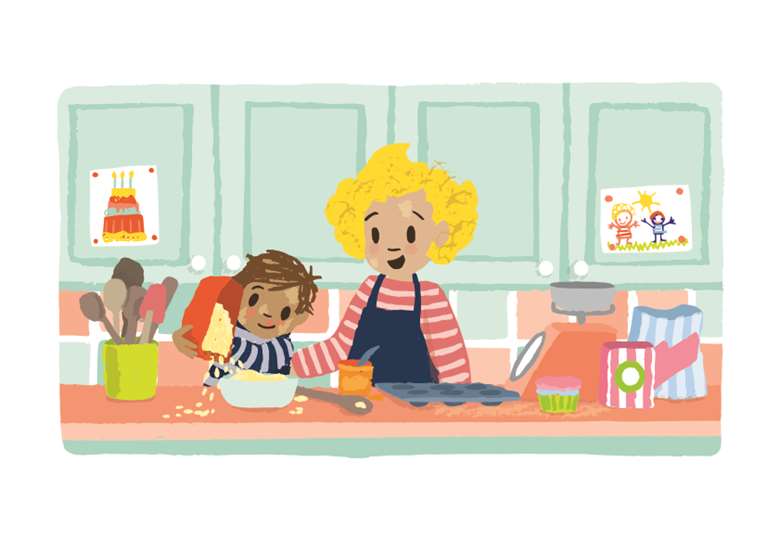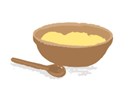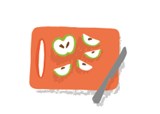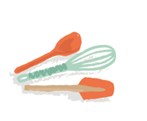Parent’s Guide: Early learning - cooking
Annette Rawstrone
Monday, February 3, 2020
Why do early years settings get children involved in food preparation and cooking, what does this involve, and how can parents help? Annette Rawstrone explains

Traditionally, children learnt how to cook from watching and then helping in the kitchen at home. This is an activity that is being shared less as our lives are getting busier, so your child’s nursery may involve children in preparing food, and encourage you to do the same with your child whenever you have the time. 
WHY NURSERIES OFFER COOKING
The benefits of cooking with children are so wide-ranging that it’s possible to link most of the early years curriculum to this activity. These include:
Numeracy – as children count out spoonfuls, weigh ingredients, calculate how many rolls to make or measure baking trays.
Early science – as they observe the consistency of mixtures change, colours merge and ingredients be transformed by heat or cold. Health– as your child is introduced to new flavours and tastes. Children are more likely to try something new if they have helped to make it.
Physical skills – such as strengthening their grip and practising hand-eye co-ordination, as they handle kitchen implements while helping to peel carrots, chop apples, whisk eggs, sift flour or stir cake mixture.
Language development – as they chat about what they are seeing, such as dough rising, egg mixture fluffing up or soup simmering.
Understanding the world – as they discuss where ingredients come from, such as how vegetables are grown or their country of origin. It also gives children the opportunity to talk about traditional dishes from different cultures.
Emotional development – as they gain confidence from helping with tasks they associate with adults, such as preparing a salad or baking bread. It is also a good way for an adult and child to bond. 
HOW NURSERIES INTRODUCE COOKING
Practitioners will always take account of your child’s age and skill level before starting to cook with them. They will also keep group sizes as small as possible, so that children can be involved properly, kept safe and hear instructions easily.
There are lots of tasks that even very young children can do, such as washing fruit, ripping lettuce leaves, drying bowls or laying the table. Of course, there are also more challenging jobs that involve heat or sharp implements. Practitioners will gradually introduce tools, such as peelers and small knives, and ensure that children know how to handle and use them properly under supervision.
Often nurseries will cook a range of food with children, rather than just sweet food. This gives a healthy-eating message and introduces a range of preparation and cooking methods.
Some nurseries have cooking activities available for children to access when they wish, rather than as an organised activity. This will often involve children following simple instructions using sequenced photographs, with staff nearby to help if needed. Other settings provide playdough tables, where children can make dough to use in their play.
SUPPORTING YOUR CHILD
Finding time to cook with your child can be hard, but cooking is an important life skill and a good opportunity for you to have fun together. Let them join in by following these tips:
Expect a mess, so put a plastic tablecloth or sheet on the floor, dress your child – and yourself – in clothes that you don’t mind getting grubby, and put on aprons.
Discuss food hygiene, such as always washing hands before and after handling food, tying back long hair, wiping food preparation surfaces and not licking fingers during cooking.
Think about your child’s previous experience and start with something that isn’t too much of a challenge – have a quick Google for inspiration.
If you have got more than one child, plan ahead and think what tasks each can do – or be organised with extra bowls or implements.
Let your child feel the different ingredients and taste them, where appropriate. Have clean teaspoons ready for tasting with and, of course, let your child li

ck their fingers or spoon at the end.
Discuss what you are cooking with, what stages you need to do and why.
Let it be fun and don’t worry if your child loses interest – does it matter if they end up playing with the water in the washing-up bowl while you complete the recipe? Then sit down and enjoy eating the food together.
resource ideas
- Get inspiration from watching CBeebies I Can Cook: www.bbc.co.uk/food/programmes/b00w1ddl/episodes
- Child-sized aprons are available from supermarkets or online stores.

Books
- Children’s First Cookbook by Annabel Karmel
Simple recipes from sundaes to scrambled eggs.
- Children’s Cookbook: Delicious Step-by-Step Recipes by Katharine Ibbs and Catherine Saunders
More than 50 easy recipes for breakfast, lunch and dinner.
- The Kew Gardens Children’s Cookbook: Plant, Cook, Eat! by Caroline Craig and Joe Archer
Essential guides to growing and cooking vegetables.
- The Easy Family Cookbook by Ella’s Kitchen
Over 100 easy family recipes.
- See Inside…Where Food Comes From by Emily Bone and Peter Allen
Lift the flaps to find out where food comes from.
Download Now




